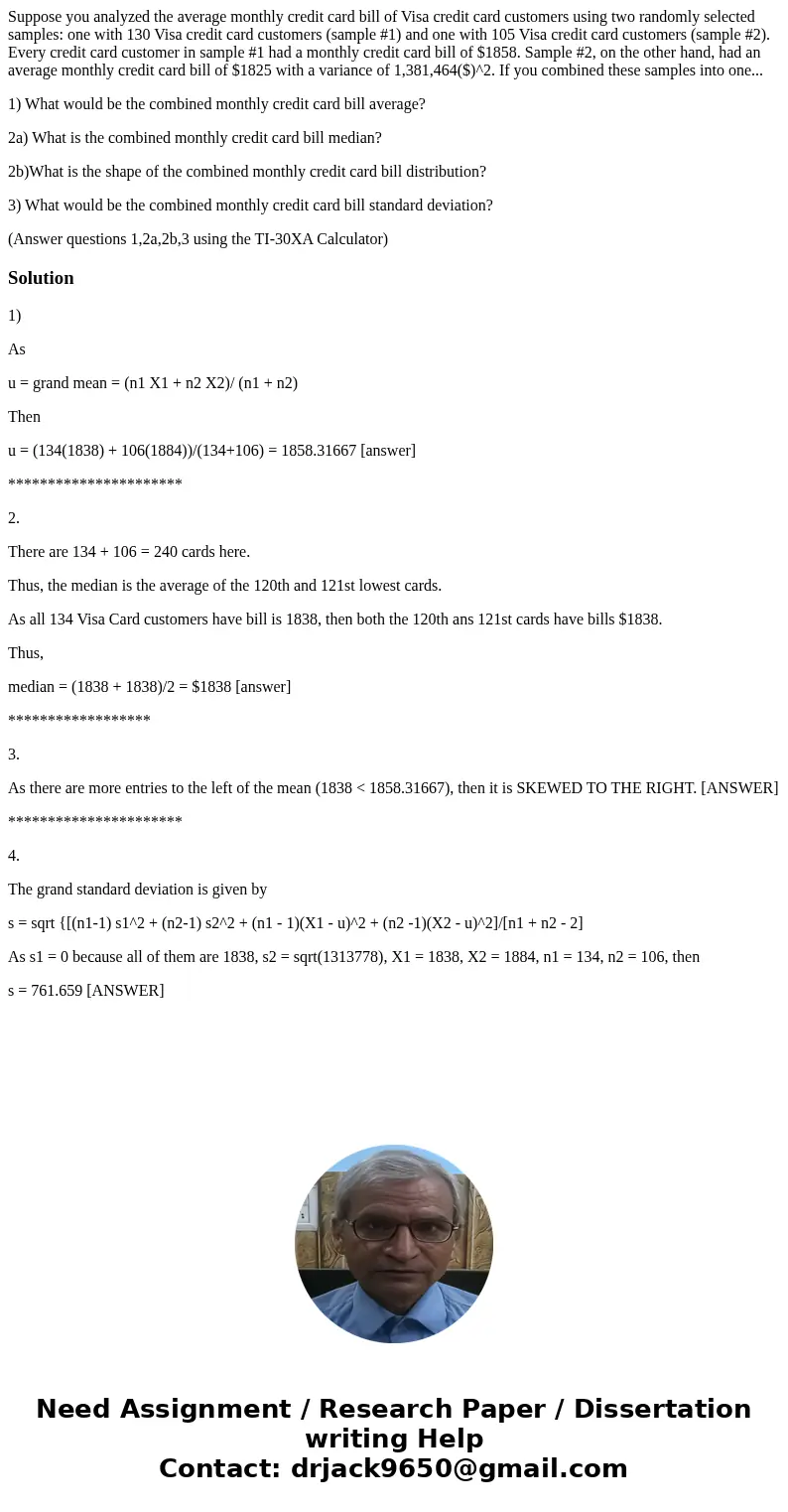Suppose you analyzed the average monthly credit card bill of
Suppose you analyzed the average monthly credit card bill of Visa credit card customers using two randomly selected samples: one with 130 Visa credit card customers (sample #1) and one with 105 Visa credit card customers (sample #2). Every credit card customer in sample #1 had a monthly credit card bill of $1858. Sample #2, on the other hand, had an average monthly credit card bill of $1825 with a variance of 1,381,464($)^2. If you combined these samples into one...
1) What would be the combined monthly credit card bill average?
2a) What is the combined monthly credit card bill median?
2b)What is the shape of the combined monthly credit card bill distribution?
3) What would be the combined monthly credit card bill standard deviation?
(Answer questions 1,2a,2b,3 using the TI-30XA Calculator)
Solution
1)
As
u = grand mean = (n1 X1 + n2 X2)/ (n1 + n2)
Then
u = (134(1838) + 106(1884))/(134+106) = 1858.31667 [answer]
**********************
2.
There are 134 + 106 = 240 cards here.
Thus, the median is the average of the 120th and 121st lowest cards.
As all 134 Visa Card customers have bill is 1838, then both the 120th ans 121st cards have bills $1838.
Thus,
median = (1838 + 1838)/2 = $1838 [answer]
******************
3.
As there are more entries to the left of the mean (1838 < 1858.31667), then it is SKEWED TO THE RIGHT. [ANSWER]
**********************
4.
The grand standard deviation is given by
s = sqrt {[(n1-1) s1^2 + (n2-1) s2^2 + (n1 - 1)(X1 - u)^2 + (n2 -1)(X2 - u)^2]/[n1 + n2 - 2]
As s1 = 0 because all of them are 1838, s2 = sqrt(1313778), X1 = 1838, X2 = 1884, n1 = 134, n2 = 106, then
s = 761.659 [ANSWER]

 Homework Sourse
Homework Sourse